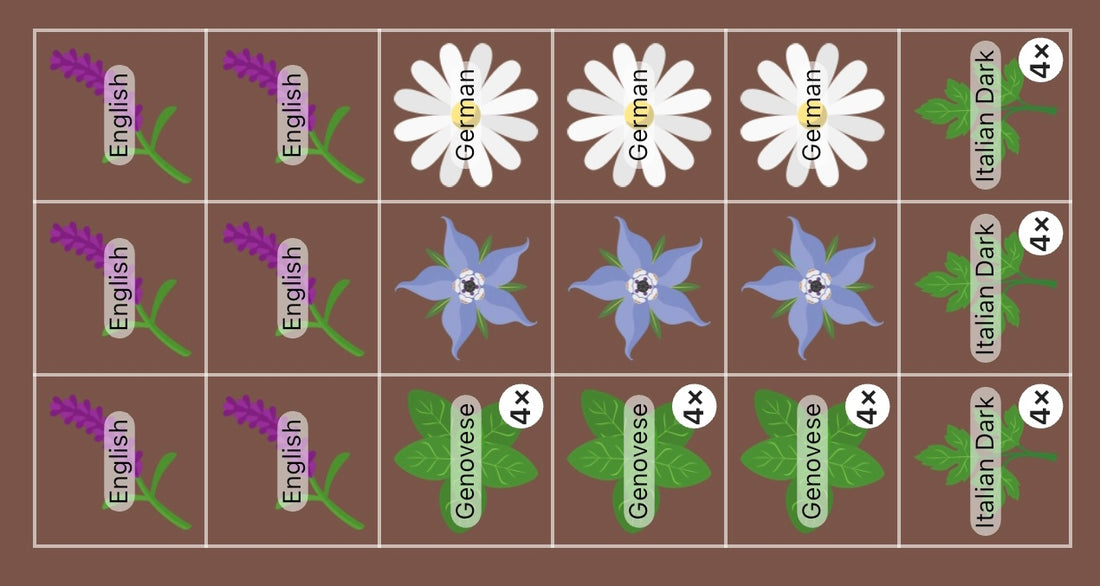Creating a tea garden can be an exquisite and rewarding endeavor, offering a delightful escape into the world of flavors and aromas. If you find yourself in zone 6, fear not! There is an array of perennial plants that thrive in this region, providing a constant source of tea ingredients year after year. So, let's embark on a journey of confidence and inspiration as we explore the wonderful world of perennial plants for your tea garden!
- Lavender (Lavandula angustifolia):
- Sunlight: Full sun (6-8 hours per day)
- Soil: Well-draining, slightly alkaline soil
- Spacing: 12-18 inches apart
- Hardiness Zone: USDA zones 5-8
- Growing Tip: Prune after flowering to maintain shape and encourage bushiness.
- Harvest: Gather the fragrant lavender flowers just as they start to open.
- Prepare: Steep 2-3 teaspoons of fresh or dried flowers in hot water for 5-10 minutes. Adjust steeping time for desired strength.
- Common Mint or consider a native American Wild Mint (Mentha canadensis):
- Sunlight: Partial to full sun
- Soil: Moist, fertile soil
- Spacing: 18-24 inches apart
- Hardiness Zone: USDA zones 3-7
- Growing Tip: Keep soil consistently moist; mint can be invasive, consider planting in containers.
- Harvest: Pick mint leaves before flowering for the best flavor.
- Prepare: Use 1 tablespoon of fresh leaves or 1 teaspoon of dried leaves per cup. Steep in hot water for 5-7 minutes.
- German Chamomile (Matricaria chamomilla) an annual and Chamomile (Chamaemelum nobile) a perennial:
- Sunlight: Full sun to partial shade
- Soil: Well-drained, moderately fertile soil
- Spacing: 6-12 inches apart
- Hardiness Zone: USDA zones 3-9
- Growing Tip: Sow seeds directly in the garden in early spring; chamomile prefers slightly drier conditions.
- Harvest: Collect the flowers when fully open, ideally in the morning.
- Prepare: Use 2-3 teaspoons of dried flowers per cup. Steep in hot water for 5 minutes. Add honey for sweetness if desired.
- Lemon Balm (Melissa officinalis):
- Sunlight: Partial shade to full sun
- Soil: Well-drained, moist soil
- Spacing: 12-24 inches apart
- Hardiness Zone: USDA zones 4-9
- Growing Tip: Harvest frequently to promote bushy growth; can be invasive, consider containment.
- Harvest: Harvest the leaves just before the plant flowers.
- Prepare: Steep 1-2 tablespoons of fresh leaves or 1-2 teaspoons of dried leaves in hot water for 5-10 minutes. Add a slice of lemon for extra flavor.
- Borage (Borago officinalis):
- Sunlight: Full sun
- Soil: Well-draining, sandy soil
- Spacing: 12-24 inches apart
- Hardiness Zone: USDA zones 2-11
- Growing Tip: Directly sow seeds in the garden in spring; attracts pollinators.
- Harvest: Collect young leaves and flowers.
- Prepare: Steep 1-2 teaspoons of fresh leaves or flowers in hot water for 10-15 minutes. Borage has a mild cucumber flavor.
- Purple Cone Flower (Echinacea purpurea):
- Sunlight: Full sun to partial shade
- Soil: Well-draining, slightly acidic to neutral soil
- Spacing: 18-24 inches apart
- Hardiness Zone: USDA zones 3-8
- Growing Tip: Deadhead spent flowers to encourage continuous blooming.
- Harvest: Use fresh petals as soon as they open.
- Prepare: Steep 2 teaspoons of fresh petals in hot water for 10-15 minutes. Echinacea tea is often enjoyed with a touch of honey.
- Sage (Salvia officinalis):
- Sunlight: Full sun
- Soil: Well-drained, sandy-loam soil
- Spacing: 18-24 inches apart
- Hardiness Zone: USDA zones 5-8
- Growing Tip: Prune regularly to maintain shape; sage is drought-tolerant.
- Harvest: Harvest leaves before the plant flowers for the best flavor.
- Prepare: Steep 1-2 teaspoons of fresh or dried leaves in hot water for 5-7 minutes. Sage tea has a robust flavor, so adjust to taste.
- Bee Balm (Monarda didyma):
- Sunlight: Full sun to partial shade
- Soil: Moist, well-drained soil
- Spacing: 12-18 inches apart
- Hardiness Zone: USDA zones 4-9
- Growing Tip: Keep soil consistently moist; deadhead spent flowers to encourage continuous the leaves and flowers when fully open.
- Prepare: Steep 2-3 teaspoons of fresh leaves or 1-2 teaspoons of dried leaves in hot water for 5-10 minutes. Enjoy the citrusy flavor and aromatic scent.
In your zone 6 tea garden, these plants offer not only visual and aromatic delights but also a diverse range of flavors. As you prepare your teas, experiment with ratios and steeping times to find the perfect balance that suits your taste. Sip and savor the unique essence of each plant, allowing the ritual of tea-making to be as enjoyable as the final cup itself. Cheers to the art of cultivating, harvesting, and brewing your very own tea garden delights!
References:
NYFA: New York Flora Atlas. (n.d.). https://newyork.plantatlas.usf.edu/

